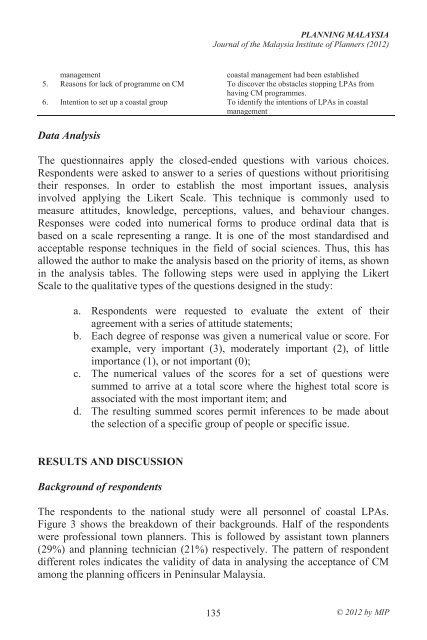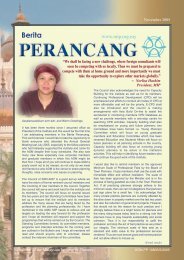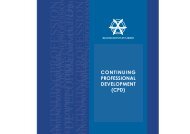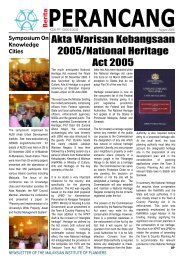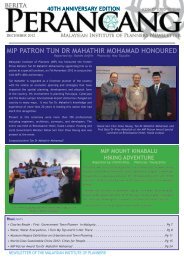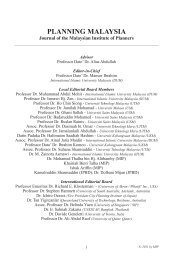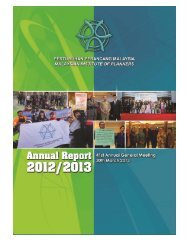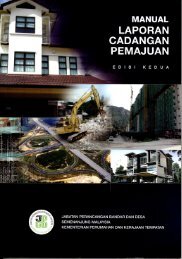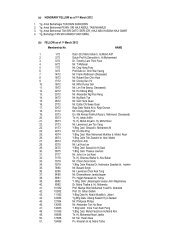Untitled - Malaysian Institute of Planners
Untitled - Malaysian Institute of Planners
Untitled - Malaysian Institute of Planners
You also want an ePaper? Increase the reach of your titles
YUMPU automatically turns print PDFs into web optimized ePapers that Google loves.
PLANNING MALAYSIAJournal <strong>of</strong> the Malaysia <strong>Institute</strong> <strong>of</strong> <strong>Planners</strong> (2012)managementcoastal management had been established5. Reasons for lack <strong>of</strong> programme on CM To discover the obstacles stopping LPAs fromhaving CM programmes.6. Intention to set up a coastal group To identify the intentions <strong>of</strong> LPAs in coastalmanagementData AnalysisThe questionnaires apply the closed-ended questions with various choices.Respondents were asked to answer to a series <strong>of</strong> questions without prioritisingtheir responses. In order to establish the most important issues, analysisinvolved applying the Likert Scale. This technique is commonly used tomeasure attitudes, knowledge, perceptions, values, and behaviour changes.Responses were coded into numerical forms to produce ordinal data that isbased on a scale representing a range. It is one <strong>of</strong> the most standardised andacceptable response techniques in the field <strong>of</strong> social sciences. Thus, this hasallowed the author to make the analysis based on the priority <strong>of</strong> items, as shownin the analysis tables. The following steps were used in applying the LikertScale to the qualitative types <strong>of</strong> the questions designed in the study:a. Respondents were requested to evaluate the extent <strong>of</strong> theiragreement with a series <strong>of</strong> attitude statements;b. Each degree <strong>of</strong> response was given a numerical value or score. Forexample, very important (3), moderately important (2), <strong>of</strong> littleimportance (1), or not important (0);c. The numerical values <strong>of</strong> the scores for a set <strong>of</strong> questions weresummed to arrive at a total score where the highest total score isassociated with the most important item; andd. The resulting summed scores permit inferences to be made aboutthe selection <strong>of</strong> a specific group <strong>of</strong> people or specific issue.RESULTS AND DISCUSSIONBackground <strong>of</strong> respondentsThe respondents to the national study were all personnel <strong>of</strong> coastal LPAs.Figure 3 shows the breakdown <strong>of</strong> their backgrounds. Half <strong>of</strong> the respondentswere pr<strong>of</strong>essional town planners. This is followed by assistant town planners(29%) and planning technician (21%) respectively. The pattern <strong>of</strong> respondentdifferent roles indicates the validity <strong>of</strong> data in analysing the acceptance <strong>of</strong> CMamong the planning <strong>of</strong>ficers in Peninsular Malaysia.135© 2012 by MIP


